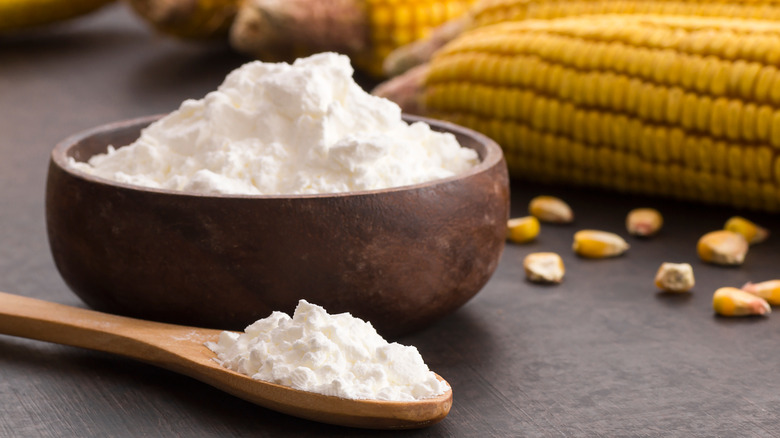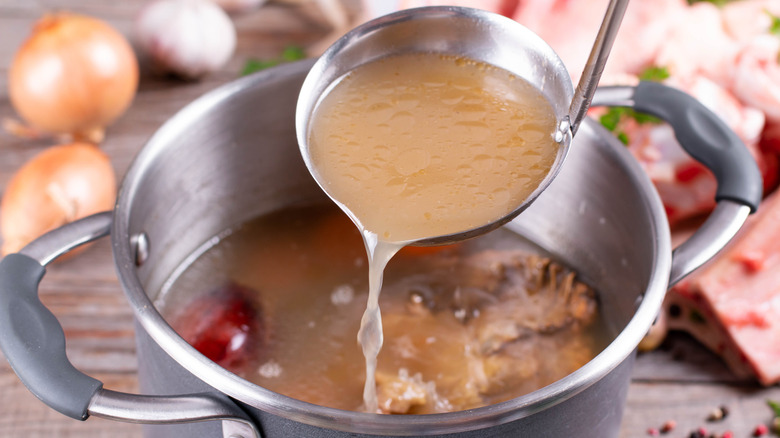Is It Bad To Eat Cornstarch?
If you've ever eaten soup, sauces, stir fry, pies, or other desserts, you've likely eaten cornstarch. Invented in the mid-19th century and first used primarily as a laundry aid, cornstarch was eventually discovered to be a useful ingredient in food preparation due to its thickening properties (via Martha Stewart). In fact, cornstarch can be twice as powerful as flour when it comes to thickening.
Cornstarch, which comes from the endosperm of the corn kernel, is the most commonly used thickening agent among other grain-derived starches such as rice, wheat, and potatoes. For its thickening properties to be activated, cornstarch needs to be heated to a simmering temperature. From there, it can be used in a wide range of dishes. Best of all, it can last indefinitely in your kitchen, assuming it's kept in a cool, dry place. Given that cornstarch is a key component in so many meals and baked items, could it possibly be bad to eat?
Potential alternatives to cornstarch
According to Healthline, cornstarch is high in carbohydrates and calories yet low on beneficial nutrients. It can take 1 cup of cornstarch to begin to see some nutritional value, but this is a much larger portion than you would normally consume. Typically, 1 or 2 tablespoons is used to thicken a soup. If you are looking for a healthier alternative to cornstarch when cooking or baking, Medical News Today suggests a number of options.
For instance, if you are able to eat gluten, wheat flour is far healthier compared to cornstarch due to its higher amount of protein and low amount of carbohydrates. The downside is that wheat flour is not as starchy as cornstarch, so you will likely need to use more of it in your recipe. Rice flour is another proven substitute for cornstarch, and, like wheat flour, it also contains more nutrients. Potato starch is another alternative. While it doesn't have as many nutrients as rice and wheat flour, it is still far lower in calories compared to cornstarch. It is also a good option for people who need to be on a gluten-free diet (via Medical News Today).
Something to be mindful of is if you crave eating raw cornstarch, it could be a sign of a disorder known as pica (via Livestrong). More research is required, but health experts believe that pica can be a sign that you have anemia or are iron or zinc deficient.


